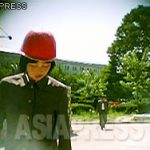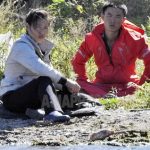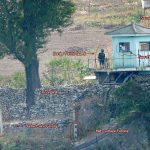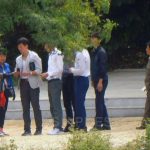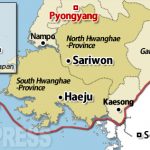In late September, a Chinese reporting partner took photos of a farming area near the Yalu River in Sakju County, North Pyongan Province. The reporting partner approached North Korean territory on a ferry. At the time, the farm was at the height of the corn harvest. The photos show a large number of people mobilized for the harvest from different areas of North Korea. (KANG Ji-won / ISHIMARU Jiro)
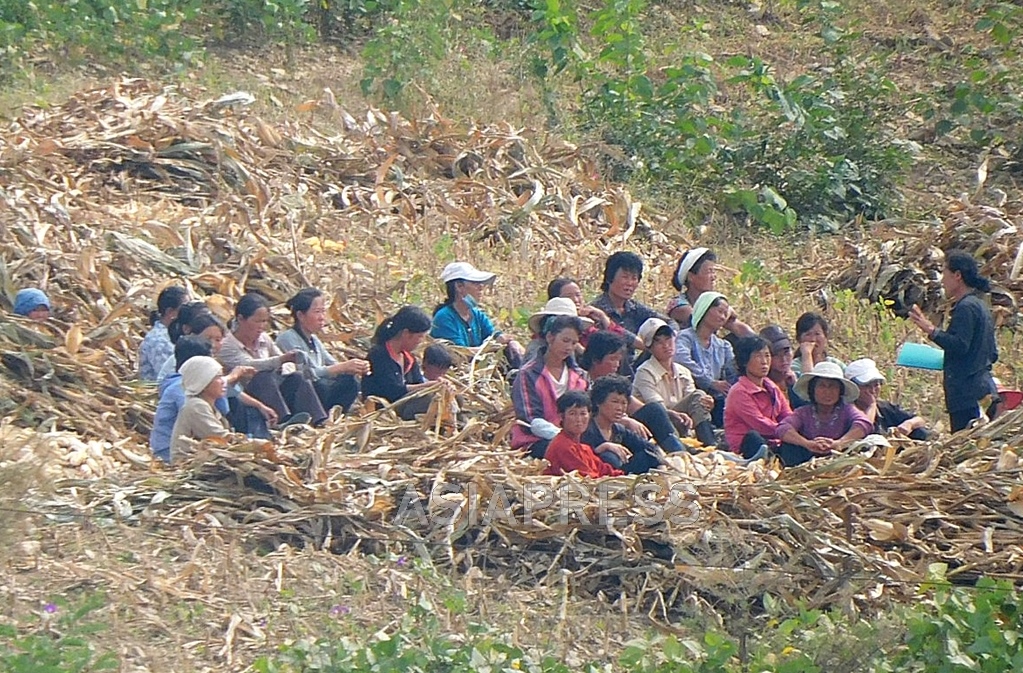
◆ Middle school girls wave to Chinese tourists with smiling faces
Photo 1 shows what appears to be members of the “Socialist Women’s Union” mobilized for the harvest from another area of North Korea. Farmers conduct the harvest as part of sub-work teams, the smallest production units on collective farms. The sub-work teams are typically made up of 10-12 men and women. The Socialist Women’s Union is made up of housewives without formal jobs. In the photograph, they appear to be conducting a review of the day’s work in the middle of a field. The woman standing on the right seems to be the head of the group. There’s also a woman who has brought her child.
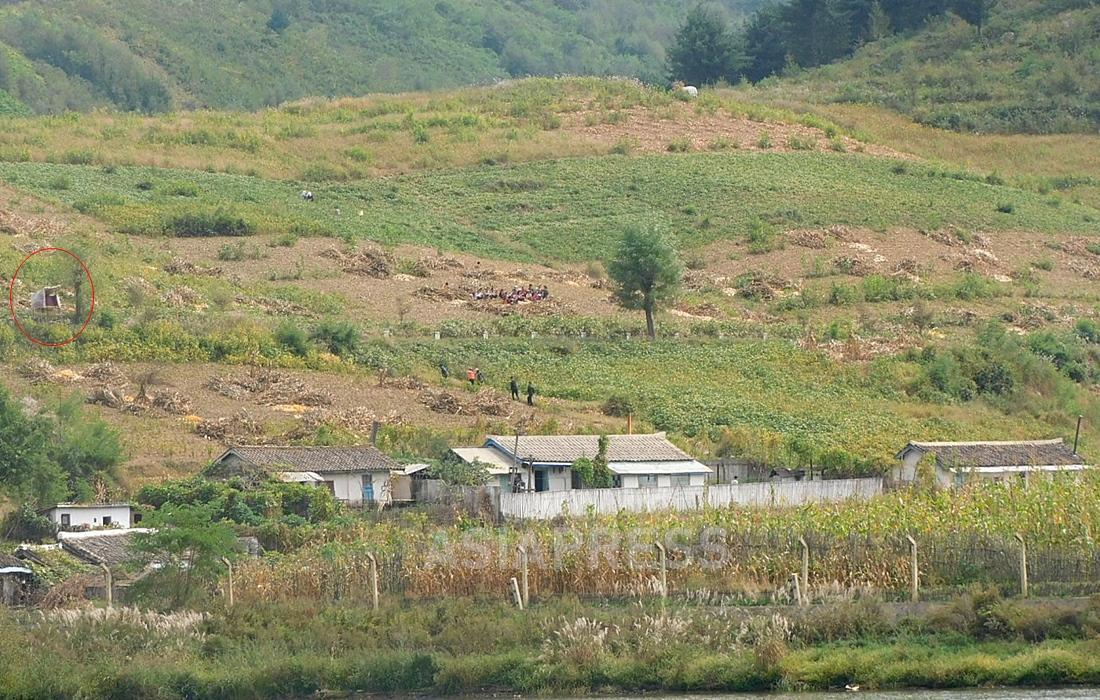
Photo 2, meanwhile, was taken at the same place. At the center of the photo are women in the middle of a meeting. The red circle to the upper left is a structure built to monitor the fields for thieves.
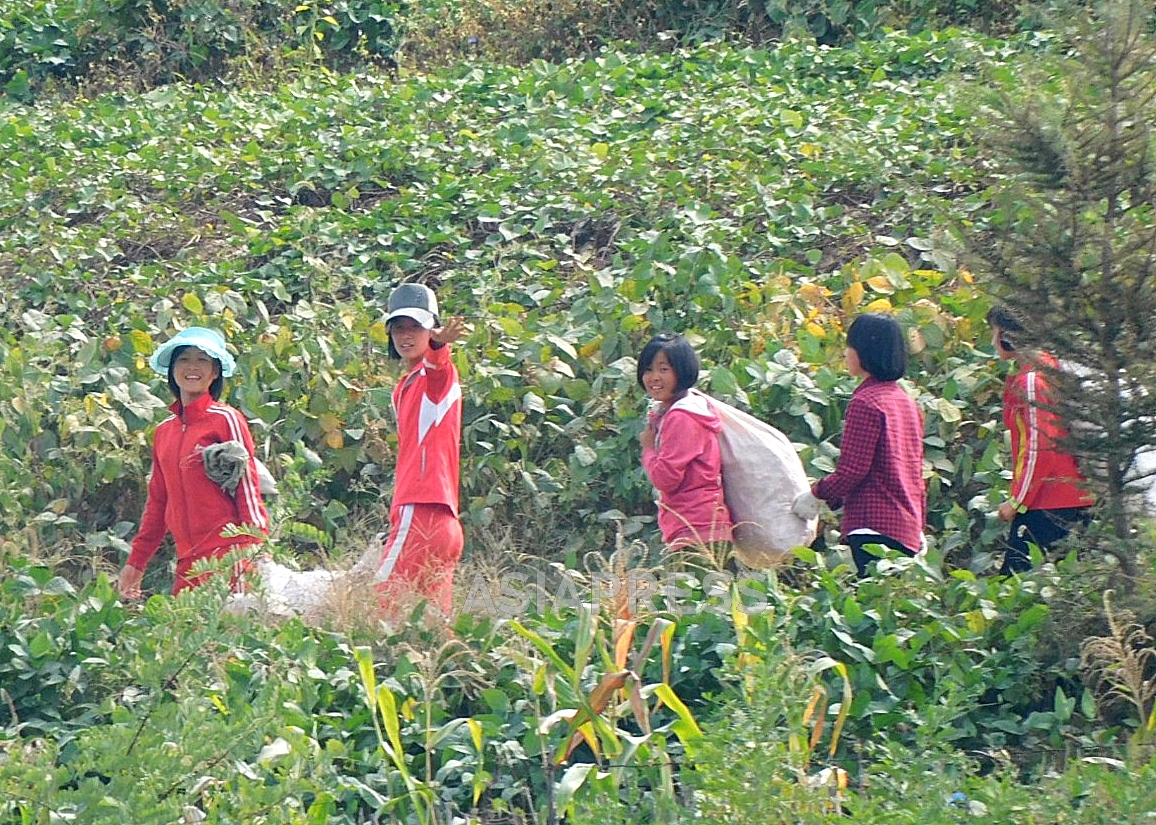
Photo 3 shows female middle students mobilized for the harvest. North Koreans are instructed to wave nicely to Chinese people on ferry boats navigating the Yalu River. The children’s smiles are reassuring because there have been people dying this year due to malnutrition caused by the country’s economic troubles.
The girls are carrying a white sack, which appears to be grass that they’ll use to feed to rabbits they are raising at home. Households in North Korea are required to raise rabbits, whose meat and fur are supplied to the military. Photo 4, meanwhile, shows a middle school student mobilized for the harvest in a nearby area.
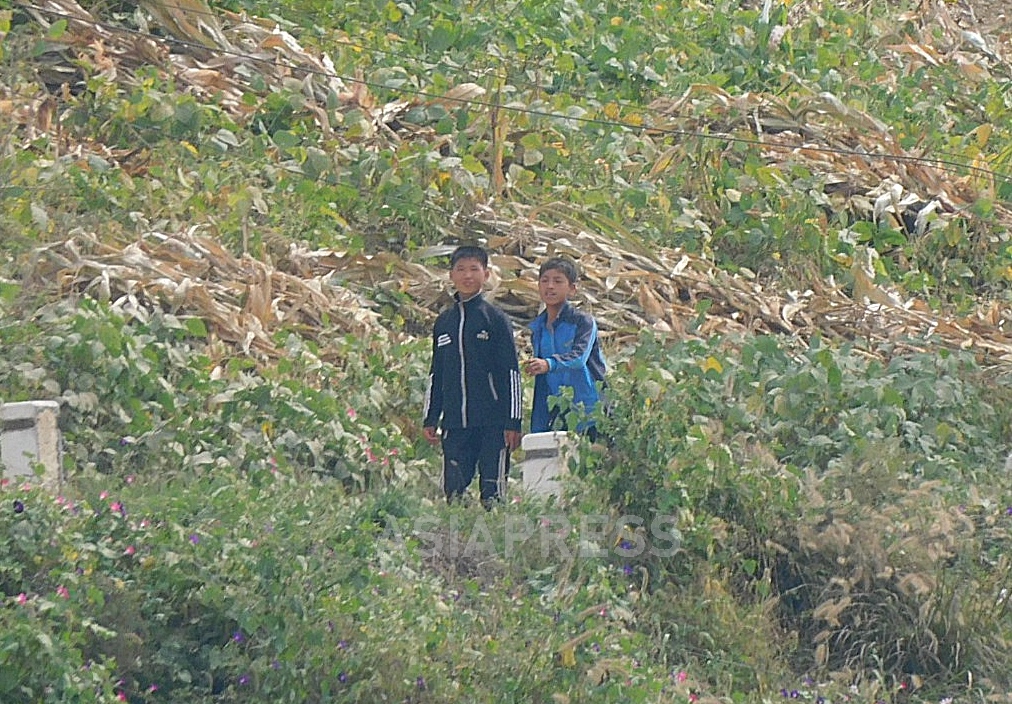
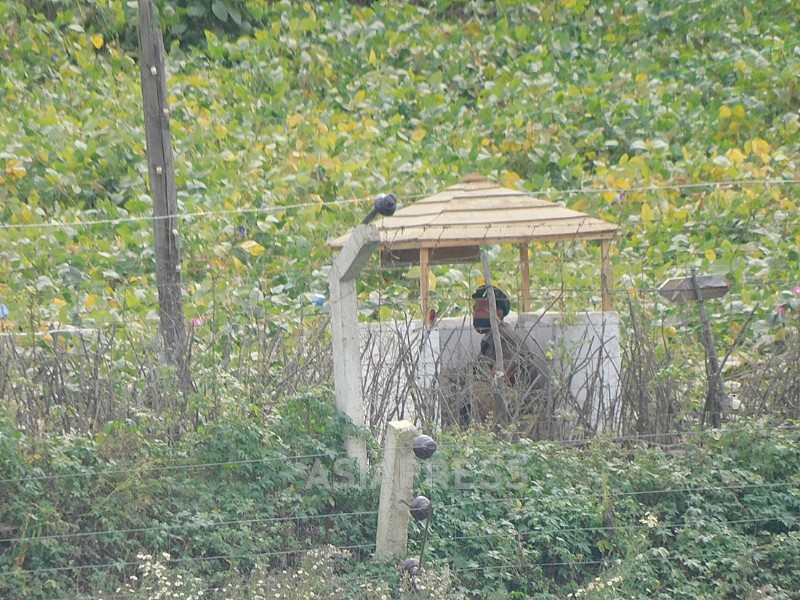
◆ Farmers mobilized to guard the border and watch over soldiers’ activities
Photo 5 shows a farmer who appears to have been mobilized for border security. Immediately after the start of the COVID-19 pandemic in January 2020, the Kim Jong-un regime closed the country’s borders. The regime then moved to strengthen the barbed-wire fence network along most of the river borders with China. The pretext for the project was to prevent the spread of the virus, but the real aim was to prevent North Koreans from crossing or running away over the border to China.
At the same time, the regime built even more inspection points and guard houses along the border manned by both soldiers and local civilians. Several ASIAPRESS reporting partners living near the Yalu and Tumen rivers have reported that the regime’s decision to put civilians in charge of security along the border is “mainly to watch over soldiers guarding the frontier.” The civilians are tasked with preventing soldiers from taking bribes to turn a blind eye to defections, border crossings, and smuggling activities. In short, civilians and soldiers are watching over each other’s activities.
All the photographs in this article were taken on the Chinese side of the border across from Sakju County, North Pyongan Province, in late September 2023. (ASIAPRESS)
※ ASIAPRESS communicates with reporting partners through Chinese cell phones smuggled into North Korea. (To 5 >>)
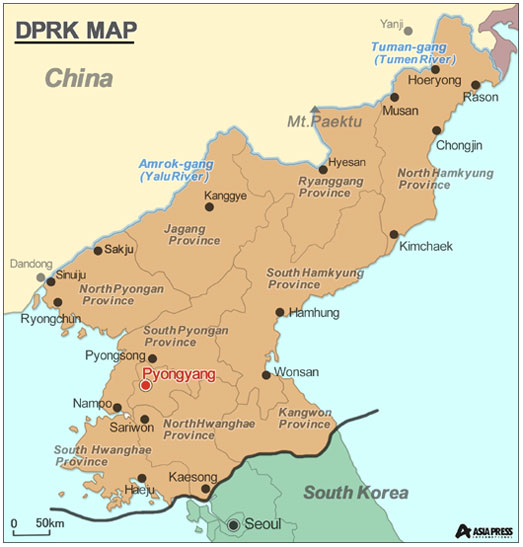
- <Inside N. Korea> A recent report on conditions at farms (7) Many people mobilized to harvest this year’s good yield of potatoes… But, “several tons of potatoes are going rotten in a storage facility each day”
- <Inside N. Korea > A recent report on conditions at farms (6) Major investigation underway after end of harvest to uncover corruption by cadres…Unfair punishment causes uproar on one farm
- <Inside N. Korea> A recent report on conditions at farms (5) Telescopic lens captures conditions in farming communities – 2 The highly-fortified border is akin to a disputed zone…why? (10 photos)
- <Inside N. Korea> A recent report on conditions at farms (3) Thieves from the cities lead to strict monitoring of farming areas…farmers face tough times trying to earn cash (4 recent photos)
- <Inside N. Korea> A recent report on conditions at farms (2) The military is given priority over harvested crops because “there are many soldiers suffering from malnutrition”…In a rare move, the military takes crops directly from fields (3 recent photos)
- <Inside N. Korea> A recent report on conditions at farms (1) The harvest is better than last year, but lack of materials remains a serious problem (4 recent photos)
